Difference Between Bifocal and Progressive Lenses
As technology continues to advance, so too do the options available for vision correction. For individuals requiring multifocal lenses, the choice between bifocal and progressive lenses can be a daunting one. Understanding the distinctions between these two types of lenses is crucial for making an informed decision that aligns with individual needs and preferences.

Bifocal Lenses:
Bifocal lenses have been a staple in the eyewear industry for decades. They are characterized by a visible line that divides the lens into two distinct sections. The upper part of the lens is designed for distance vision, while the lower portion contains the reading prescription. This simple yet effective design allows wearers to switch between the two prescriptions by adjusting their gaze up or down.
Pros of Bifocal Lenses:
-
Clear distinction: Bifocals provide a clear and distinct separation between distance and near vision, making it easy for wearers to transition between the two.
-
Cost-effective: Bifocal lenses are often more budget-friendly compared to their progressive counterparts.
Cons of Bifocal Lenses:
-
Limited intermediate vision: The visible line in bifocals means there's no designated prescription for intermediate distances, leading to potential discomfort for tasks like computer use.
-
Aesthetic concerns: Some individuals find the visible line in bifocals aesthetically unappealing.
Progressive Lenses:
Progressive lenses represent a more modern and seamless solution for those requiring multiple prescriptions. Unlike bifocals, progressives have a smooth and gradual transition between distance, intermediate, and near vision. This is achieved through a sophisticated design that incorporates a gradient of prescription strengths across the lens surface.
Pros of Progressive Lenses:
-
Seamless transitions: Progressive lenses offer a natural and seamless transition between different prescription strengths, providing wearers with clear vision at all distances.
-
Intermediate vision: The design of progressive lenses includes an intermediate zone, catering to activities like computer use, which may be challenging with bifocals.
-
Aesthetically pleasing: Progressive lenses lack the visible line that characterizes bifocals, offering a more aesthetically pleasing appearance.
Cons of Progressive Lenses:
- Adjustment period: Some wearers may experience a short adjustment period when adapting to the smooth transition between prescriptions.
Price in pakistan of both type of lenses
Progressive lenses are more expensive than bifocal lenses. Progressive lenses have price from 3200pkr to 14000 pkr while bifocal lenses have price from 2500 pkr to 10000pkr . To know more about progressive lens price in pakistan read our blog.
Conclusion:
The choice between bifocal and progressive lenses ultimately boils down to individual preferences, lifestyle, and visual needs. Bifocals are a classic and cost-effective option for those who prefer a clear separation between distance and near vision. On the other hand, progressive lenses provide a more modern and aesthetically pleasing solution, offering seamless transitions between different distances.
Considerations such as comfort, aesthetics, and budget should guide the decision-making process. Consulting with an eye care professional can help determine the most suitable option based on individual requirements. Ultimately, the best choice is one that aligns with the wearer's lifestyle and provides the clearest, most comfortable vision for their unique needs.









